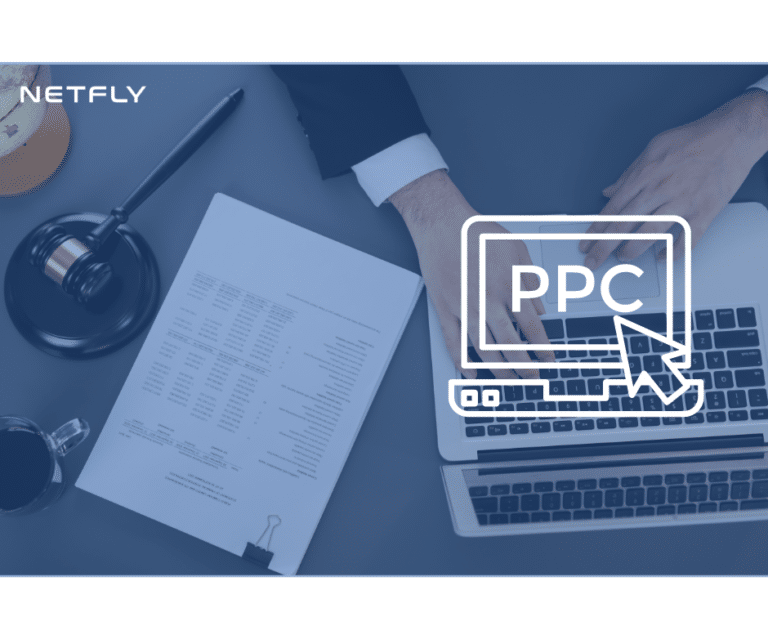In today’s competitive legal landscape, personal injury attorneys must strategically position themselves to attract and retain clients effectively. Understanding the dynamics of personal injury leads is vital for fueling a firm’s success. By mastering the art of lead generation, qualification, and nurturing, attorneys can guarantee a steady influx of potential clients. This discussion will explore how demographic analysis, digital marketing tools, and networking can be leveraged to optimize your firm’s marketing efforts. Are you ready to discover the secrets to boosting your client acquisition and building a robust pipeline of promising leads?
Key Takeaways
- Mastering lead qualification and nurturing enhances client acquisition strategies for personal injury attorneys.
- Demographic analysis and audience segmentation tailor marketing efforts to attract targeted personal injury clients.
- SEO, PPC, and targeted email campaigns drive a 20-30% increase in qualified personal injury leads.
- Networking and professional referrals secure a consistent pipeline of high-quality personal injury clients.
- Optimizing websites for mobile devices and creating high-quality content improve user experience and search engine rankings.
Understanding Personal Injury Leads
Understanding personal injury leads is crucial for attorneys as it allows them to strategically target potential clients who have a high probability of requiring legal representation for their injury claims. By mastering the intricacies of lead qualification and lead nurturing, law firms can greatly enhance their client acquisition strategies. Lead qualification is the process of evaluating the potential value of a lead, ensuring that resources are allocated efficiently. This involves appraising various criteria such as the nature and severity of the injury, the jurisdiction, and the likelihood of a successful claim.
Data-driven approaches are essential in this scenario, as they provide actionable insights into which leads are most promising. For instance, analytics can help identify patterns in past successful cases, guiding the firm in prioritizing leads that exhibit similar characteristics.
Lead nurturing, on the other hand, involves engaging and building relationships with potential clients over time. This is achieved through personalized communication strategies, such as follow-up emails, educational content, and timely updates. Effective lead nurturing increases the likelihood of conversion by maintaining a strong presence in the potential client’s decision-making process. Ultimately, a well-executed lead strategy can greatly enhance a firm’s success in personal injury cases.
Identifying Target Audience
Identifying the target audience is an essential imperative for personal injury attorneys aiming to maximize their client acquisition efforts and case success rates. This involves a meticulous demographic analysis to understand the characteristics and behaviors of potential clients. By examining factors such as age, income, location, and specific injury types, attorneys can tailor their marketing strategies to reach the most relevant prospects effectively.
Audience segmentation is a pivotal component in this process. This technique divides the broader market into smaller, more manageable groups based on shared characteristics. For instance, one segment might consist of young adults involved in automobile accidents, while another could include elderly individuals who have experienced medical malpractice. This granular approach allows for more personalized and impactful communication strategies, thereby increasing the likelihood of converting leads into clients.
Furthermore, leveraging data analytics tools can enhance the precision of these efforts. By analyzing historical case data and client interactions, firms can identify trends and patterns that inform future marketing initiatives. In a competitive landscape, such data-driven strategies are indispensable for achieving sustained growth and success. Ultimately, a well-defined target audience is not merely a marketing convenience but a cornerstone for building a thriving personal injury practice.
Effective Lead Generation Strategies
To secure high-quality personal injury leads, attorneys must strategically leverage digital marketing tools and capitalize on networking and referral opportunities. For instance, data shows that firms utilizing SEO and PPC campaigns can see a 20-30% increase in lead generation. Additionally, cultivating strong referral networks with healthcare providers and other professionals can greatly enhance lead quality and conversion rates.
Leveraging Digital Marketing Tools
How can attorneys effectively harness digital marketing tools to generate high-quality personal injury leads in today’s competitive landscape? The answer lies in a strategic application of SEO analytics and targeted email campaigns. By leveraging SEO analytics, attorneys can identify the keywords and search terms potential clients use when seeking legal help. This data-driven approach allows for the optimization of website content, guaranteeing it ranks higher in search engine results and attracts organic traffic.
Additionally, targeted email campaigns are instrumental in nurturing potential leads. Utilizing segmentation based on user behavior and demographics, attorneys can send personalized content that addresses specific pain points and legal needs. This tailored communication not only enhances engagement but also builds trust and credibility, making prospects more likely to convert into clients.
Moreover, integrating these digital marketing tools with a robust CRM system enables efficient tracking and management of leads. This holistic approach ensures no potential client slips through the cracks, maximizing the return on marketing investments. In a competitive legal landscape, these strategies provide a significant advantage, driving both visibility and lead conversion for personal injury attorneys.
Networking and Referrals
Networking and referrals remain some of the most effective lead generation strategies for personal injury attorneys, leveraging existing relationships to cultivate new client opportunities. Data from the American Bar Association indicates that 62% of legal practitioners acquire clients through referrals, underscoring the effectiveness of this approach. By attending events such as industry conferences, legal seminars, and local community gatherings, attorneys can foster valuable connections that often translate into client leads.
Building partnerships with other professionals—such as medical practitioners, insurance agents, and even other attorneys—serves as a strategic method to enhance referral networks. These partnerships can facilitate a steady stream of qualified leads, as these professionals are frequently in positions where they encounter potential clients who require legal assistance. Engaging in joint ventures or co-hosting events can further solidify these relationships, making them mutually beneficial over the long term.
Moreover, maintaining a robust online presence, where clients and partners can easily provide testimonials and reviews, can amplify word-of-mouth referrals. According to Legal Trends Report, 85% of clients trust online reviews as much as personal recommendations, emphasizing the significance of a well-rounded referral strategy. By strategically investing in networking and referrals, personal injury attorneys can secure a consistent and high-quality lead pipeline.
Optimizing Your Website
To maximize personal injury leads, attorneys must guarantee their websites are strategically optimized. This includes implementing user-friendly navigation design, creating high-quality content, and ensuring a robust mobile optimization strategy. Statistics show that 70% of web traffic comes from mobile devices, underscoring the importance of these elements in converting visitors into clients.
User-Friendly Navigation Design
An strategically optimized website with user-friendly navigation is essential for converting potential personal injury leads into clients. An intuitive interface ensures that visitors can easily find the information they need, leading to a seamless experience that fosters trust and engagement. According to a study by Forrester Research, a well-designed user interface could increase your website’s conversion rate by up to 200%. This statistic underscores the critical role of user-friendly navigation in capturing and retaining leads.
When potential clients visit your site, they should immediately understand where to go and what actions to take. Clear, logical menus and straightforward pathways to key information—such as contact forms, case studies, and service descriptions—can significantly enhance user experience. Implementing features such as breadcrumb navigation and a persistent menu can make it easier for users to navigate complex legal information without feeling overwhelmed.
Furthermore, optimizing your website’s mobile navigation is important. Google reports that 61% of users are unlikely to return to a mobile site they had trouble accessing, and 40% visit a competitor’s site instead. Ensuring your site is responsive with user-friendly navigation across all devices can greatly increase your chances of converting leads into clients.
High-Quality Content Creation
While user-friendly navigation streamlines the user experience, high-quality content creation is equally crucial in optimizing your website to attract and convert personal injury leads. High-quality content not only informs and engages potential clients but also greatly enhances your website’s search engine rankings. Implementing effective SEO techniques is vital; this includes using relevant keywords, optimizing meta descriptions, and making sure that your content addresses the specific queries of your target audience.
According to industry data, websites that consistently publish valuable content experience a 55% increase in traffic. By adopting a strategic content scheduling approach, you can guarantee a steady flow of fresh, engaging material. This not only keeps your audience engaged but also indicates to search engines that your site is active and authoritative.
Moreover, long-form content and in-depth articles on personal injury law topics can establish your firm as a thought leader in the field. Data-driven insights suggest that pages with detailed content tend to perform better in search results. As a result, integrating these SEO techniques and maintaining a disciplined content scheduling calendar can greatly enhance your website’s visibility and conversion rates, ultimately driving the success of your personal injury practice.
Mobile Optimization Strategy
In today’s digital landscape, optimizing your website for mobile devices is essential, with recent studies showing that over 60% of online searches originate from smartphones and tablets. For attorneys seeking to capture personal injury leads, ensuring mobile compatibility is no longer mandatory—it’s vital. A mobile-optimized website not only enhances user experience but also positively impacts your search engine rankings, increasing your visibility to potential clients.
Adopting a responsive design is a strategic move to make sure that your website automatically adjusts to fit different screen sizes, providing a seamless browsing experience. This design approach eliminates the need for separate mobile and desktop versions, simplifying content management and ensuring consistency across devices. Google’s mobile-first indexing further underscores the importance of mobile compatibility, as it primarily uses the mobile version of the content for indexing and ranking.
Data-driven insights reveal that websites with responsive design tend to have lower bounce rates and higher engagement metrics. This translates to a higher likelihood of converting visitors into clients. Therefore, investing in a robust mobile optimization strategy is not just about keeping up with technology; it’s about strategically positioning your firm to attract and retain clients in an increasingly mobile-driven world.
Leveraging Social Media
Harnessing the power of social media can greatly amplify an attorney’s ability to generate high-quality personal injury leads. A strategic approach combining audience engagement and content scheduling can yield substantial results. According to the American Bar Association, 35% of law firms have gained clients through social platforms, underscoring their potential.
Engaging your audience effectively is paramount. Regularly posting informative content relevant to personal injury law not only positions your firm as a thought leader but also fosters trust and credibility. Platforms like LinkedIn and Facebook are especially effective for reaching a more targeted demographic, with 79% of online adults using Facebook. Utilizing data analytics tools, attorneys can track engagement metrics to refine their strategies continually.
Content scheduling is another critical component. Tools like Hootsuite and Buffer enable consistent posting, ensuring that your firm remains visible and top-of-mind. A well-planned schedule that includes a mix of client testimonials, case studies, and insightful articles can maintain engagement levels while attracting potential clients. Research indicates that firms posting weekly receive twice the engagement compared to less frequent posters.
Utilizing Paid Advertising
Strategically deploying paid advertising can greatly enhance an attorney’s ability to attract high-quality personal injury leads. By leveraging data-driven strategies, attorneys can guarantee cost management is effectively handled, maximizing return on investment. Platforms such as Google Ads, Facebook Ads, and LinkedIn offer robust targeting options that allow for precise ad placement, reaching potential clients at the right moment.
Implementing a pay-per-click (PPC) campaign can be particularly impactful. PPC allows attorneys to bid on keywords relevant to personal injury cases, ensuring their ads appear prominently in search results. This not only increases visibility but also drives qualified traffic to their websites. Utilizing geographic targeting within these campaigns further refines ad placement, focusing resources on specific locales where legal services are most needed.
Moreover, retargeting strategies can keep a firm top-of-mind for potential clients who have previously interacted with their website or content. This continuous engagement can greatly improve conversion rates. Additionally, cost management is essential; analyzing performance metrics such as cost-per-acquisition (CPA) and click-through rates (CTR) enables firms to optimize their advertising spend. By continually refining these strategies, attorneys can maintain a competitive edge in attracting and securing personal injury leads.
Measuring Lead Success
Accurately measuring lead success is essential for attorneys to evaluate the effectiveness of their marketing strategies and optimize their efforts in attracting personal injury clients. Conversion tracking serves as a critical tool in this endeavor, providing a quantifiable measure of how potential leads turn into actual clients. By implementing sophisticated tracking mechanisms, attorneys can pinpoint which marketing channels yield the best returns, allowing for data-driven adjustments and budget reallocations.
Lead quality assessment further enhances this process by differentiating between high-value and low-value leads. Not all leads are created equal; understanding the characteristics of leads that result in successful client relationships can greatly improve marketing efficiency. Metrics such as initial consultation rates, case acceptance rates, and client retention rates offer invaluable insights into the caliber of generated leads.
Moreover, integrating analytics software with CRM systems enables real-time performance monitoring, ensuring that attorneys can swiftly respond to emerging trends and shifts in lead behavior. This strategic approach not only maximizes return on investment but also fosters a more streamlined and effective client acquisition process. Ultimately, a meticulous focus on conversion tracking and lead quality empowers law firms to refine their marketing strategies and drive sustainable growth.
Frequently Asked Questions
How Can I Manage and Track the Leads I Receive Effectively?
Effectively manage and track leads by utilizing CRM integration to streamline processes and employing lead scoring techniques to prioritize high-value prospects. This strategic approach maximizes efficiency and guarantees data-driven decision-making for peak client acquisition.
What Are the Legal Considerations When Purchasing Personal Injury Leads?
When maneuvering through the labyrinth of purchasing personal injury leads, make sure your lead sources are reputable and conduct rigorous compliance checks to avoid legal pitfalls, thereby safeguarding your practice like a fortress against potential regulatory breaches.
How Do I Handle a High Volume of Leads Without Compromising Quality?
To handle a high volume of leads without compromising quality, consider leveraging technology for efficient lead management and delegating tasks to specialized team members. This strategic approach guarantees both responsiveness and thoroughness, maintaining high client satisfaction.
What Are the Best Practices for Following up With Potential Clients?
To optimize client acquisition, implement follow-up timing within 24-48 hours and utilize effective communication strategies such as personalized emails and phone calls. Data shows timely, strategic follow-ups markedly improve client engagement and conversion rates.
How Should I Train My Staff to Convert Leads Into Clients Efficiently?
To efficiently convert leads into clients, implement training workshops focused on communication and closing techniques. Additionally, establish staff incentives based on performance metrics to motivate and reward successful conversions, consequently driving higher engagement and productivity.
Conclusion
The journey to mastering personal injury leads encompasses strategic demographic analysis, targeted digital marketing, and meticulous lead tracking. Yet, the culmination of these efforts holds an intriguing promise: the potential for exponential growth in client acquisition and retention. As each strategy interlocks, the anticipation builds—what awaits is not merely incremental success but a transformative shift in a firm’s market position. The implications are profound, heralding a new era of competitive dominance in the legal landscape.










